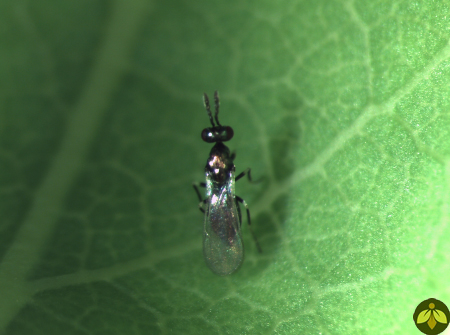Description
 Diglyphus isaea are warm-weather leafminer parasites to control leafminers. These 2mm mini-wasps are best used for preventing the establishment of several leafminer species such as Liriomyza.sp. and the Chrysanthemum Leafminer Chromatomyia (=Phytomyza) syngenesiae. They can also tackle minor infestations. And, if established, they can adequately protect a crop throughout the season.
Diglyphus isaea are warm-weather leafminer parasites to control leafminers. These 2mm mini-wasps are best used for preventing the establishment of several leafminer species such as Liriomyza.sp. and the Chrysanthemum Leafminer Chromatomyia (=Phytomyza) syngenesiae. They can also tackle minor infestations. And, if established, they can adequately protect a crop throughout the season.
Diglyphus isaea, which are shipped as pre-hatched, pre-fed adults, are the product of choice when leafminers are first seen, or soon expected to be seen, in a warmer area. They do best in warmer conditions.
Life-style
The life-span of these parasites is roughly 2 weeks in their immature stages, then 3 weeks as adults. The conditions for optimum performance will be between 75-90°F with a relative humidity of around 80%. But these are optimum conditions, and not necessarily a prerequisite of successful implementation. Please note, however, significantly cooler or warmer temperatures and humidity fluctuations may hamper reproduction and development a certain degree.
Scouting
Advisories
Usages
Release rates
Purchase
-

Diglyphus isaea – leafminer parasite (250)
$80.95 Select options This product has multiple variants. The options may be chosen on the product page
